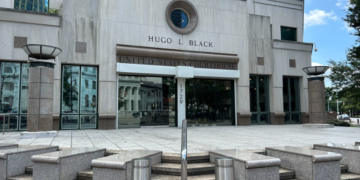Jan 18, 2025 Story by: Editor
The Fifth Circuit Court of Appeals is poised to review a case that could overturn decades of precedent by significantly limiting Section 2 of the Voting Rights Act, potentially barring claims brought by multiracial coalitions of minority voters. This appeal, filed by Galveston County, Texas, follows a successful challenge by Black and Latino voters against the county’s new district map. In support of the plaintiffs, the Brennan Center for Justice collaborated with the Asian American Legal Defense and Education Fund and the law firm Paul, Weiss, Rifkind, Wharton & Garrison LLP to file an amicus brief.
The Role of Section 2 in Protecting Minority Voting Rights
Section 2 of the Voting Rights Act has been instrumental in safeguarding communities of color from systemic racial discrimination in the electoral process. It provides a legal avenue for minority voters to challenge election practices and district maps that dilute their political influence. However, the Fifth Circuit is now considering whether to curtail Section 2 by preventing multiracial groups, such as the Black and Latino plaintiffs in this case, from jointly contesting discriminatory practices that affect multiple racial communities.
Galveston County’s History of Discriminatory Redistricting
Galveston County has a documented history of implementing discriminatory electoral maps. The Department of Justice (DOJ) intervened in 1992 and 2012 under Section 5 of the Voting Rights Act to block district plans that would have reduced minority voters’ ability to elect their preferred candidates. As a result, Black and Latino voters secured representation through a majority-minority district.
However, the Supreme Court’s 2013 decision in Shelby County v. Holder nullified Section 5’s preclearance requirement, removing a crucial safeguard. This allowed Galveston County, during the 2021 redistricting process, to dismantle the majority-minority district. The new district map dispersed Black and Latino voters across all five districts, each with a white majority that consistently votes against minority-preferred candidates. Despite minorities comprising approximately one-third of the county’s eligible voting population, this redistricting effectively excluded them from meaningful representation. In response, local civil rights groups, the DOJ, and Black and Latino voters filed a lawsuit challenging the map.
Legal Challenge and Recent Developments
The plaintiffs argued that the redistricting plan violated Section 2 of the Voting Rights Act and alleged it was adopted with discriminatory intent. In October 2023, a federal trial court ruled in favor of the plaintiffs, describing the district plan as “stark” and “egregious” in denying Black and Latino voters equal voting rights. Although a three-judge panel from the Fifth Circuit upheld this ruling on appeal, they encouraged the full circuit to reevaluate its precedent allowing multiracial coalitions to file joint claims under Section 2. The en banc hearing was granted, and the case is now under consideration.
Brennan Center’s Amicus Brief in Support of Plaintiffs
Ahead of the en banc hearing, the Brennan Center, alongside its partners, filed an amicus brief on February 21, 2024, advocating for the plaintiffs. The brief asserts that Section 2’s text, legislative history, and purpose support claims by minority voters facing shared racial discrimination, regardless of their specific racial identities. When Congress amended Section 2 in 1982, it intentionally used inclusive language to ensure protection for anyone denied equal rights based on race. This approach was built on a 1970s Supreme Court case involving Black and Latino voters in Texas.
The brief emphasizes that addressing collective discrimination is essential for combating the diverse forms of racial bias that persist in the United States. Historically, systemic policies have marginalized all nonwhite groups, restricting their access to equal rights in voting, citizenship, education, housing, employment, and marriage.
Moreover, the brief highlights that the existing Section 2 framework has proven effective in distinguishing valid claims brought by mono- or multiracial groups from those lacking merit. Its detailed, fact-based approach allows courts to address cases where voters of different backgrounds share a common experience of discrimination.
This case represents a pivotal moment in the ongoing fight to preserve voting rights and ensure that multiracial coalitions can challenge electoral practices that undermine their collective political power.
Source: Brennan Center

















